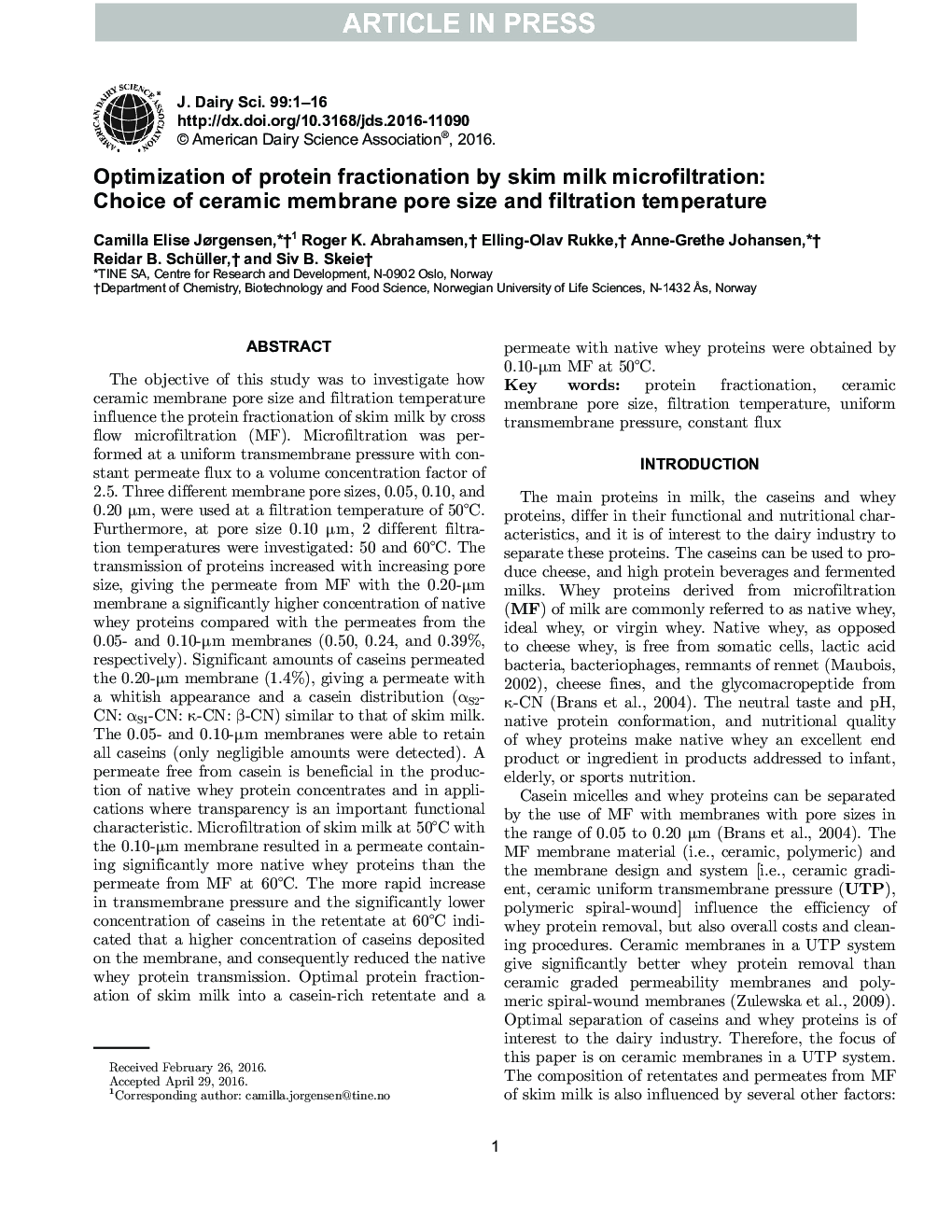| کد مقاله | کد نشریه | سال انتشار | مقاله انگلیسی | نسخه تمام متن |
|---|---|---|---|---|
| 10973119 | 1108011 | 2016 | 16 صفحه PDF | دانلود رایگان |
عنوان انگلیسی مقاله ISI
Optimization of protein fractionation by skim milk microfiltration: Choice of ceramic membrane pore size and filtration temperature
ترجمه فارسی عنوان
بهینه سازی تجزیه پروتئین توسط میکروفیفتراسیون شیر خشک: انتخاب اندازه ذره غشاء سرامیکی و دمای فیلتراسیون
دانلود مقاله + سفارش ترجمه
دانلود مقاله ISI انگلیسی
رایگان برای ایرانیان
کلمات کلیدی
تقطیر پروتئین، اندازه ذرات غشاء سرامیکی، دمای تصفیه فشار یکنواخت مخروطی شار ثابت
موضوعات مرتبط
علوم زیستی و بیوفناوری
علوم کشاورزی و بیولوژیک
علوم دامی و جانورشناسی
چکیده انگلیسی
The objective of this study was to investigate how ceramic membrane pore size and filtration temperature influence the protein fractionation of skim milk by cross flow microfiltration (MF). Microfiltration was performed at a uniform transmembrane pressure with constant permeate flux to a volume concentration factor of 2.5. Three different membrane pore sizes, 0.05, 0.10, and 0.20 µm, were used at a filtration temperature of 50°C. Furthermore, at pore size 0.10 µm, 2 different filtration temperatures were investigated: 50 and 60°C. The transmission of proteins increased with increasing pore size, giving the permeate from MF with the 0.20-µm membrane a significantly higher concentration of native whey proteins compared with the permeates from the 0.05- and 0.10-µm membranes (0.50, 0.24, and 0.39%, respectively). Significant amounts of caseins permeated the 0.20-µm membrane (1.4%), giving a permeate with a whitish appearance and a casein distribution (αS2-CN: αS1-CN: κ-CN: β-CN) similar to that of skim milk. The 0.05- and 0.10-µm membranes were able to retain all caseins (only negligible amounts were detected). A permeate free from casein is beneficial in the production of native whey protein concentrates and in applications where transparency is an important functional characteristic. Microfiltration of skim milk at 50°C with the 0.10-µm membrane resulted in a permeate containing significantly more native whey proteins than the permeate from MF at 60°C. The more rapid increase in transmembrane pressure and the significantly lower concentration of caseins in the retentate at 60°C indicated that a higher concentration of caseins deposited on the membrane, and consequently reduced the native whey protein transmission. Optimal protein fractionation of skim milk into a casein-rich retentate and a permeate with native whey proteins were obtained by 0.10-µm MF at 50°C.
ناشر
Database: Elsevier - ScienceDirect (ساینس دایرکت)
Journal: Journal of Dairy Science - Volume 99, Issue 8, August 2016, Pages 6164-6179
Journal: Journal of Dairy Science - Volume 99, Issue 8, August 2016, Pages 6164-6179
نویسندگان
Camilla Elise Jørgensen, Roger K. Abrahamsen, Elling-Olav Rukke, Anne-Grethe Johansen, Reidar B. Schüller, Siv B. Skeie,
